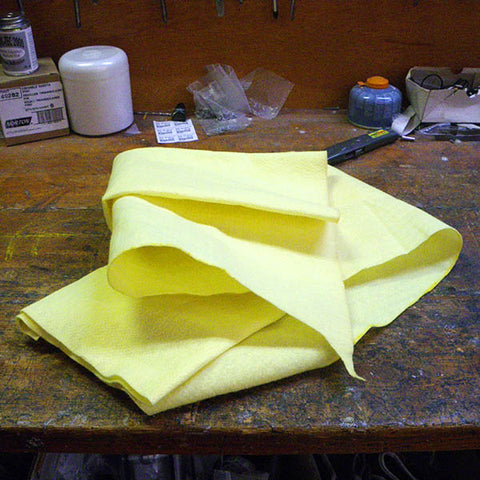How to apply skid plates
Do you ram your boat up on the shore when you land?
Did you lend your canoe to a friend to have it returned with gouges in the bow? (EX-friend)
Are you just generally uptight about your pristine new canoe getting no scratches?
Get skid plates.
You can get this done in a good boat store (like Eb's!) or you can give it a go yourself - it's not hard if you follow the steps carefully. If you have a Royalex or composite canoe, the following instructions will work (polyethylene boats need special stuff as the epoxy doesn't want to stick to them - phone us and we'll help you out).
Note: adding two skid plates can increase your boat weight by about 5 lbs, but because you have the strength of five men (paddling muscles, right?), we know you can handle it.
You will need:
- felted kevlar fabric
- epoxy resin
- solvent
- non-meltable container for the mixed epoxy
- brush
- masking tape
- latex gloves
It's a good idea to do this outside, or in a ventilated area. In the garage with the door open is a great place as your neighbours can see how handy you are.

Prepare your felt
Cut your felt in the shape you want. Measure up the stem of your boat from the tip about 9-10" and make a small mark.
Place your felt on the mark and smooth it up the end of your canoe to see if it puckers anywhere - you can cut slits in it to minimize this if you wish. Tape the ends of the felt to the canoe to keep it in place. It helps for masking if you trace around the edge of the felt with a wax crayon.

Prepare your surface
Clean the area with methyl hydrate or acetone, wiping the surface with paper towel before the solvent dries. Make sure the area dries - you can speed this up with a blow drier or heat gun if you like. Then sand the area (80 grit sandpaper is good), making sure to rough up the entire area so the epoxy can bond to it. Clean all the dust off.

Mask
Unless you want a messy looking boat, this is important! Mask around your felt with tape leaving 1/8" gap to ensure the epoxy bonds well to the canoe.

Mix your resin
We use West System epoxy resin as it is marine grade and easy to work with. Dispense the resin and hardener in a container that cannot melt (plastic, metal, or wax free paper) - the chemical reaction that turns the epoxy from a liquid to a solid state creates a large amount of heat. It melts through styrofoam and can burn your hands so be careful!
Make sure to add the correct ratio of resin to hardener, as most curing problems are a result of getting this ratio wrong. We like the West System pumps as they dispense the correct amount of liquid and are clean to use.
Stir the ingredients thoroughly.

Apply the resin
Use your brush to paint a thin layer of epoxy to the masked area of the canoe. Apply your felt (make sure it's straight!) and brush epoxy into it until it has completely wetted out - you don't want air bubbles underneath. You can smooth it with a gloved hand for a nice finish.
If it is warm and you are using a fast hardener, you will need to work fairly quickly as it doesn't take long for the epoxy to "kick".

Clean up
If you're a klutz and have spilled a large amount of resin, soak it up with sand or clay - don't use anything combustible! Sawdust is therefore a BAD IDEA.
When you are finished working, let the resin harden in the container and then dispose of it. DO NOT throw it away when it is still liquid, as the heat it generates is a fire hazard.
Let the resin cure
Let your canoe sit 24 hours to cure completely. You can take the tape off as soon as the epoxy is tacky. If necessary, you may sand the skid plate gently with a medium grit sandpaper after it has hardened.

You did it! Make sure you take your gloves off before you give yourself a slap on the back.


Comments
Leave a comment